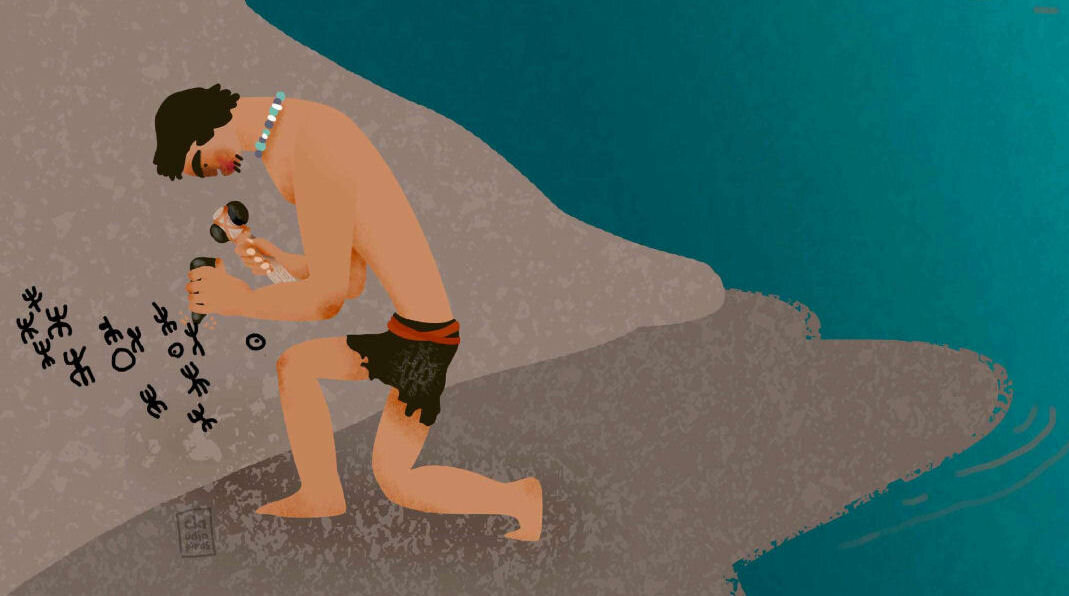The Cueva del Bue Marino is one of the main tourist attractions for all those who choose to visit the Gulf of Orosei and learn a little more about the history and nature of this evocative part of Sardinia. It is currently part of the second longest karst system in Italy, with an uninterrupted network of underground galleries stretching 72 km, running from the Supramonte of Urzulei to the crystal-clear waters of Cala Gonone, Dorgali. The cave owes its name to the mammal that frequented and inhabited it until the 1980s, namely the monk seal, called "bue marino" (sea ox) by the locals. The Cueva del Bue Marino is an independent karst complex, the subject of continuous study not only from a speleological point of view, but also geological and biological. In fact, it is divided into three distinct branches, each several kilometers long: the North Branch, which extends for more than 10 km; the Middle Branch, consisting of an underwater gallery of about 5 km; and the South Branch, currently the only one open to the public, which stretches for 8 km and represents the physical connection with the Codula Ilune karst system. The latter is the one that actually connects to four other main entrances/caves - Su Palu, Monte Longos, Su Molente, Bue Marino - and constitutes the longest underground cavity in Sardinia. One of the unique features of the South Branch of the Bue Marino is the meeting of the sea and the river, which occurs about a kilometer deep from the cave entrance, creating landscapes with unique colors. The entire karst system is located within a limestone massif from the Jurassic period, while the dating of the Cueva del Bue Marino is estimated at around 4-6 million years. The cavity appears to have been carved out by a powerful underground river, the Ilune River, which, swollen by its tributaries, managed - and at certain times still manages - to completely flood the gallery. In fact, thanks to the powerful erosive action of fresh water on the limestone, over millennia the river has been able to create such a wide and linear cavity inside the mountain, and then find its final outlet to the sea. The numerous and majestic mineral formations found along the route inside the cave have been created thanks to infiltration water, mainly rainwater, when the river fluctuated in level inside the gallery, both before and after finding its outlet to the sea. This means that even today the cave is active and it is still possible to find numerous stalactites with hanging drops, wide wet flows, small pools filled with pure and crystal-clear water, and you can also observe in the water the concentric circles created by the dripping of rainwater. The Cueva del Bue Marino represents an important heritage not only from the geo-naturalistic and biological point of view, but also from the archaeological and anthropological one; in fact, on the outer wall of the cave, petroglyphs dating from the Neolithic-Eneolithic historical period have been found. These rock engravings probably represent a scene related to worship, as there are several anthropomorphic figures in a praying position placed around two disks, which could represent solar symbols. The petroglyphs are fundamental evidence that once again confirm the cultural vitality and deep knowledge of the territory by ancient man. The cave is accessible by sea from the port of Cala Gonone; inside, the temperature remains constant, between 16° and 18° C. Accompanied by the emerald waters of the sea and then by the calm waters of the river, the visitor will be guided, during the first kilometer of the South Branch, through the Hall of the Candelabra, so called because of the concretions that grow from the ceiling; the Hall of Mirrors, with its spectacular reflections; the Hall of the Organ and, finally, the Hall of the Seal, where in the early 1980s the presence of the last monk seal pups of the Mediterranean was documented.

2025 Management Cooperative
© Lampu1 - VAT 01367790910
GROTTA DEL BUE MARINO

GROTTA DEL BUE MARINO
The Cave of the Sea Ox
The Cave of the Sea Ox
2024-04-02 18:08
2024-04-02 18:08
Array() no author 88439
la-cueva-del-bue-marino,

The Cave of the Sea Ox
2025 Management Cooperative
© Lampu1 - VAT 01367790910
